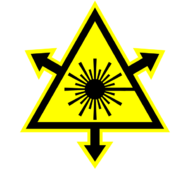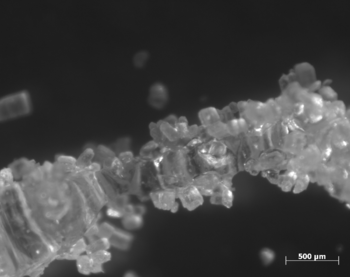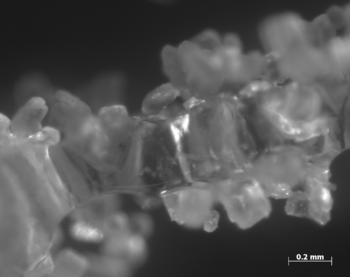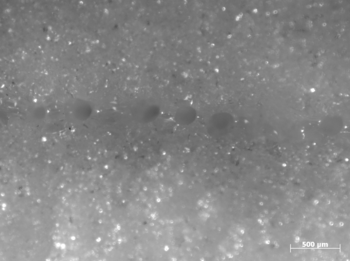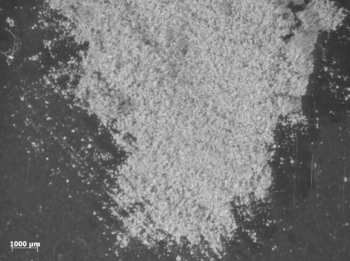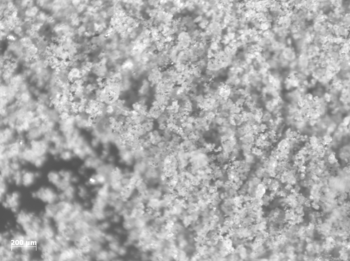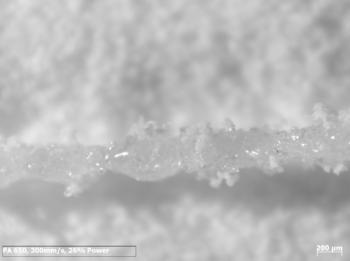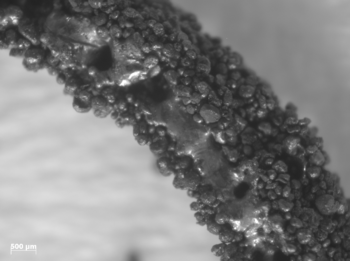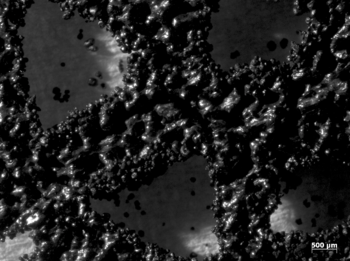OpenSLS
Release status: Experimental
| Description | This is a prototype SLS system designed to interface with a laser cutter to create a platform for experimentation with the SLS process.
|
| License | GPL
|
| Author | |
| Contributors | |
| Based-on | |
| Categories | |
| CAD Models | |
| External Link |
Contents
Introduction
Under active development-- stay tuned here!
OpenSLS is a platform for exploring the selective laser sintering process and a functioning prototype SLS 3D printer capable of fabricating objects in a variety of materials. It was developed at the Advanced Manufacturing Research Institute (AMRI) and is being used for research in regenerative medicine and tissue engineering at Jordan Miller's lab for microphysiological systems and advanced materials. This project is unique in that it appropriates existing, affordable laser hardware, namely laser cutters, for use as in the SLS process. This changed the nature of the challenge from one of procurement (ie, where to find a sufficiently powerful laser and optics) to one of integration, modular hardware design, and material development. The openSLS hardware is designed to be a drop-in powder management module whose sole purpose is to synchronously lay out layers of powder for the laser motion system (the laser cutter's gantry and laser) to sinter or melt. By adapting commercial and widely available laser cutters for this process, the barrier to entry for this technology can be lowered.
SAFETY
Because SLS is an inherently high-energy process involving a high-powered, invisible laser, CNC equipment, and hazardous materials, it should not be treated like the more familiar extrusion-based machines. This is a very dangerous process. Much can go wrong. If you decide to explore this technology, please exercise extreme caution: the potential for lasting bodily harm is real and ever-present and should taken very seriously.
Laser
The lasers used in laser cutters are incredibly powerful-- literally tens of thousands of times more powerful than the pocket laser pointers that already bear a eye-safety warning label. This is a whole other class of laser safety. Your eyes are no longer the only thing at risk. In addition to the danger of the laser radiation, the gas tube that emits the laser is driven by a high voltage power supply with voltages upwards of 30kV. Extreme care should be taken when working on the laser cutter electronics as the high voltage supply holds charge for some time after the laser cutter is powered down. Sam Goldwasser has prepared an excellent page on laser safety, including an extensive section on DIY lasers and the safety challenges there-in. Please read through it before attempting any of the work described here.
Materials
Finely powdered materials are often VERY FLAMMABLE or EXPLOSIVE in addition to being a serious respiratory hazard. Extreme care should be taken when handling powdered materials. Static shocks are in some cases enough energy to ignite clouds of dust, causing an explosion. Additionally, this first prototype does not incorporate inert-gas shielding of the powder-laser interface, which, for some materials, could be very dangerous, especially if any powder becomes airborne.
Process Overview
Terminology
Mechanics
Hardware
Print Materials
Methods of Fabrication
Isomalt and Sucrose Powders
Wax-based Powder
Sucrose
Isomalt
Candelilla Wax
Nylon
Iron
Steel
Electronics
RAMBo Board
Native Laser Cutter Electronics
Integration
Software
Videos
<videoflash type="vimeo">73432689</videoflash>
Source Files
Source files will be hosted on github and Thingiverse (solid models only) by mid-October.
Future Work
The next prototype is under active development and features heated Aluminum pistons and basic positive pressure inert-gas shielding. Progress can be tracked on Andreas Bastian's dev blog.
See Also
- The Focus SLS Printer is an impressive machine that can be assembled out of MDF and printed parts.
- Andreas Bastian's original SLS printer on which this project is based.
- Peter Jensen's early explorations of SLS printing that included the development of a low-cost reciprocating laser cutter.
- While not strictly an SLS machine, the PWDR printer is a nice powder handler.
Further Reading
- Simchi, A. (2006). Direct laser sintering of metal powders: Mechanism, kinetics and microstructural features. Materials Science and Engineering: A, 428(1-2), 148–158. doi:10.1016/j.msea.2006.04.117
